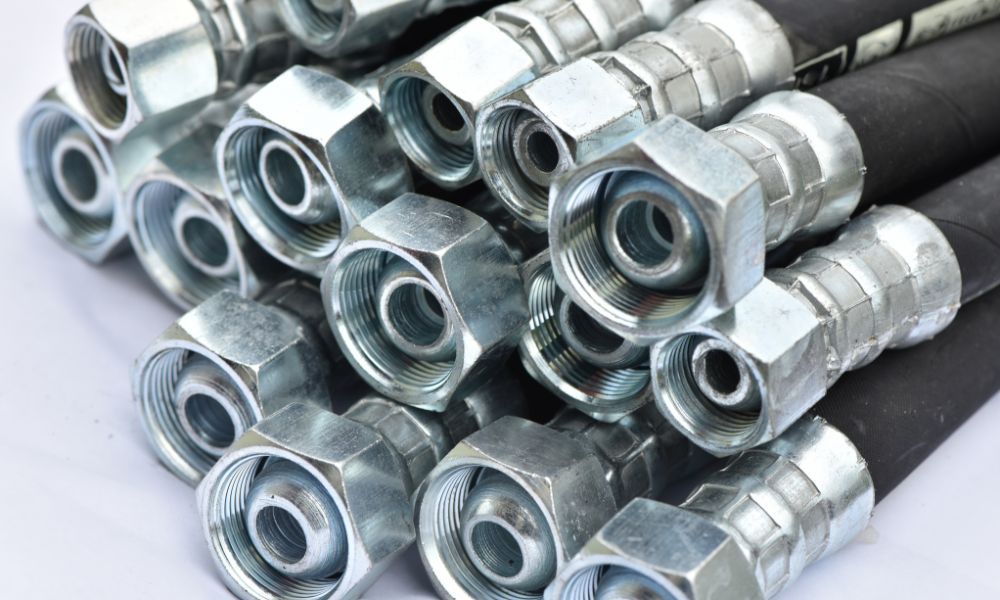5 Things Not To Do When Your Hydraulic Fitting Leaks
A leak in your hydraulic fitting can be frustrating to fix. But you can avoid common mistakes people make with hydraulic fitting leaks with our handy guide.
by Scot Ranney • December 22, 2022
Is your hydraulic system leaking? Before attempting to fix it, learn about the things not to do when your hydraulic fitting starts leaking to avoid the common mistakes many people make.
Don’t Work Without Protection
If you spot a leak in the fitting or elsewhere within the hydraulic system, don’t inspect the problem or start work without sufficient protection for your hands and skin. The hydraulic fluid within the system can be scalding hot—over 300 degrees Fahrenheit—and can eject from the system with immense pressure.
Scalding hot, high-velocity hydraulic fluid can cause severe burns or even lead to amputation. Before you get to work fixing the leak, take all the necessary precautions, including wearing sufficient protective gear for your hands and skin.
Don’t Immediately Start Tightening
When you spot a leak anywhere, whether in a hydraulic hose or underneath your kitchen sink, your first guess might be a loose nut. Many times, this is the culprit, and you can fix it by simply tightening it.
But many people assume the problem is a loose nut and end up overtightening it. Overtightening a fitting can cause even more problems, especially if that wasn’t the source of the leak, so thoroughly inspect the system to confirm the problem before trying solutions.
Don’t Inspect Without Depressurizing
It may seem obvious, but it’s not uncommon for people to attempt to fix a hydraulic system while it’s still pressurized. Leaving the system pressurized while you attempt to fix it is exceptionally dangerous and one of the things you should not do when your hydraulic fitting starts leaking.
When depressurized, it’s much safer and reduces the chance of hydraulic fluid escaping the system and scalding or harming anyone nearby. Even when depressurized, trapped fluid within the system may remain, so be cautious when working on the system.
Don’t Assume the Problem Is the Fitting
While the fittings are common sources for most leaks, it’s not safe to assume the fitting is the cause in a hydraulic system. Even if drops are falling from the fitting, the drip point is not always the leak point.
The drip could be coming from somewhere higher in the system and being pulled down by gravity before falling off the fitting. Conduct a close inspection to confirm the source of the leak before you start trying to fix it.
Don’t Ignore the Leak
The worst thing people can do when they spot a minor leak is to ignore it and hope it’s not a big deal. It’s a common reaction to hope the problem is nothing to worry about, but that’s how minor leaks grow into major issues.
At The Hose Shop, we can help you get the tools and parts you need to fix your leak, whether that’s replacement hydraulic hoses or anything else your system needs. Contact our staff to learn more about our parts and to find the components you need to fix your system.


